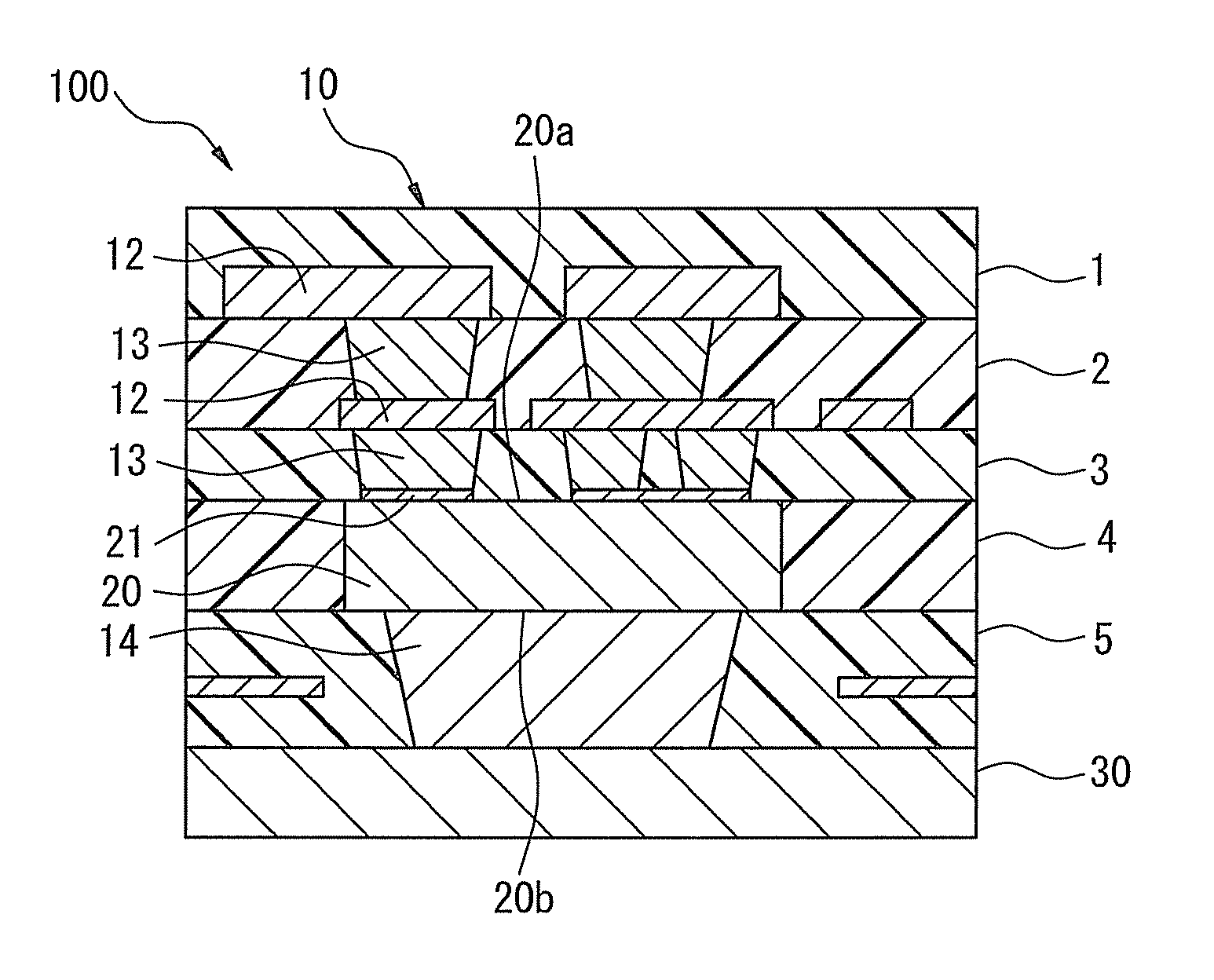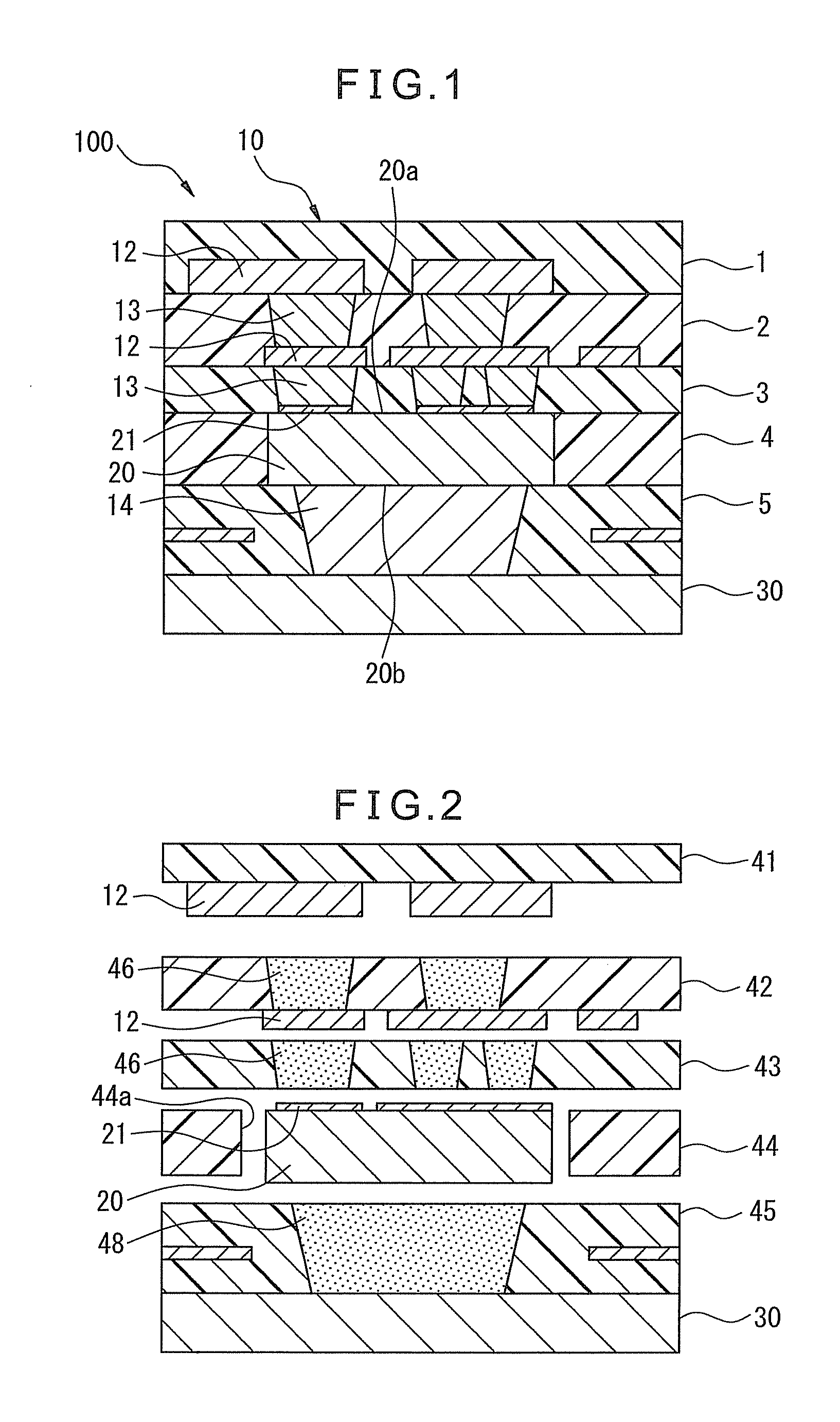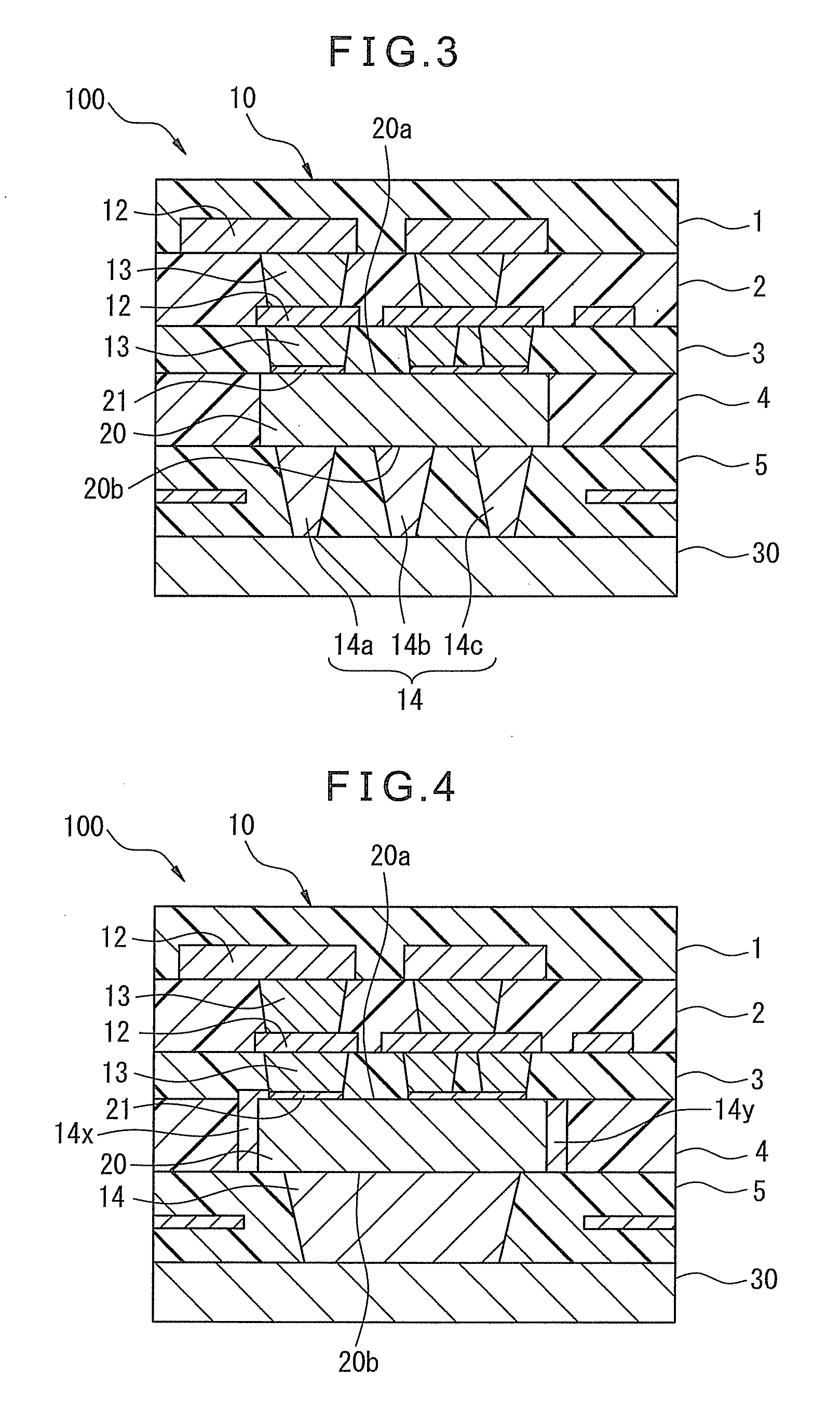Electrically conductive material and electronic device using same
a technology of electrical conductive materials and electronic devices, applied in the direction of metal/alloy conductors, electrical apparatus construction details, conductors, etc., to achieve the effect of effective us
- Summary
- Abstract
- Description
- Claims
- Application Information
AI Technical Summary
Benefits of technology
Problems solved by technology
Method used
Image
Examples
examples
[0102]The present invention will be further described with reference to the examples thereof.
example 11
[0128]The procedure described in Examples 1 to 5 described above was repeated in this example. However, in this example, a metal paste having an atomicity ratio (%) of Sn to Cu and Sn of 30% was prepared to produce the semiconductor device 100 shown in FIG. 1. The tests showed that the operating characteristics of the semiconductor chip 20 were normal and acceptable.
[0129]In this example, when the metal paste used was sintered, the XRD analysis showed that the sintered product was substantially formed from Cu3Sn alloy. Further, the electron microscopic inspection and the XRD analysis showed that a Sn diffusion layer (Cu3Sn) was formed on a surface of the heat radiation member 30 opposed to the heat-releasing via 14.
[0130]Further, as is appreciated from the state diagram (not shown) of the Cu—Sn binary alloy, when Cu and Sn are reacted in the Cu—Sn binary alloy, if an atomicity ratio (%) of Sn to Cu and Sn is in the range of 20 to 45%, Cu3Sn is substantially formed stably. In this co...
PUM
| Property | Measurement | Unit |
|---|---|---|
| temperature | aaaaa | aaaaa |
| temperature | aaaaa | aaaaa |
| temperature | aaaaa | aaaaa |
Abstract
Description
Claims
Application Information
 Login to View More
Login to View More - R&D
- Intellectual Property
- Life Sciences
- Materials
- Tech Scout
- Unparalleled Data Quality
- Higher Quality Content
- 60% Fewer Hallucinations
Browse by: Latest US Patents, China's latest patents, Technical Efficacy Thesaurus, Application Domain, Technology Topic, Popular Technical Reports.
© 2025 PatSnap. All rights reserved.Legal|Privacy policy|Modern Slavery Act Transparency Statement|Sitemap|About US| Contact US: help@patsnap.com



